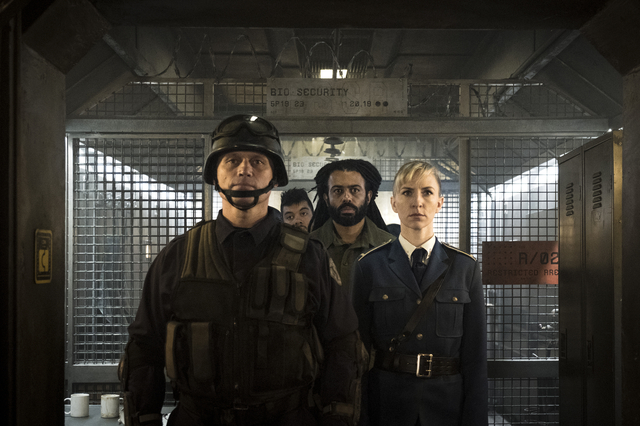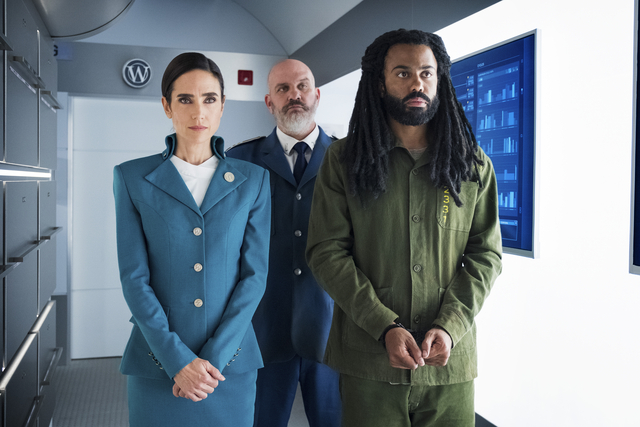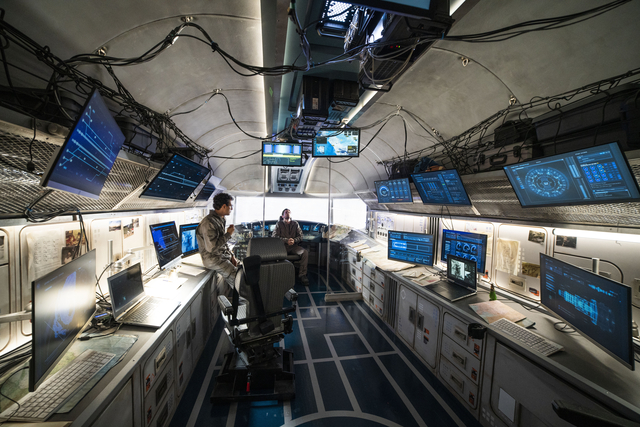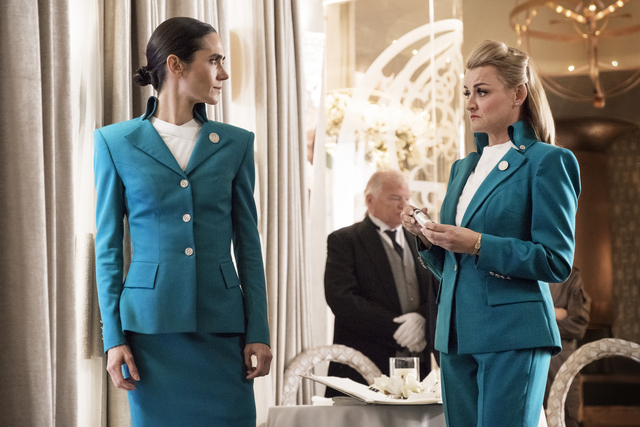In TNT’s upcoming series Snowpiercer, the remnants of humanity perpetually circle the globe on a massive, fast-moving train after the Earth is transformed into a frozen wasteland. A carefully managed ecosystem carrying the future of the human race, the titular train is also a stark experiment in class conflict and the politics of survival — until a murder threatens the delicate balance that keeps it speeding along.
Snowpiercer is inspired by the French graphic novel Le Transperceneige, which was turned into a critically acclaimed 2013 film directed by Oscar-winning Parasite filmmaker Bong Joon-ho. Cinematographer John Grillo and the series’ creative team were tasked with turning the world of Snowpiercer’s narrow cars into a constantly moving set that changed dramatically from one car to the next, condensing human society into 1,001 cars hurtling through an icy world.
Digital Trends spoke to Grillo, a two-time Emmy nominee who also worked on HBO’s Westworld, about his work on Snowpiercer, which stars Daveed Diggs and Jennifer Connelly and premieres May 17 on TNT.

Digital Trends: With a project like Snowpiercer, you’re really restricted with the space you’re operating in and what it allows you to do. What were some of the restrictions you had to work within on this show?
John Grillo: I think the biggest challenge was that the entire show is trying to make the audience feel like they’re really on the train. When you do that on other productions, you may do it once or twice, maybe three times, and you do what’s called the poor man’s process, which uses fake lighting and movement to pretend that somebody is driving a car or on a plane or whatever.
This entire show is set on a train that is constantly in motion, so the challenge for us was to always build our lighting into our sets to create that sense of movement, along with all of the shaking and swaying.

It seems like that’s something you have to figure out early on, since the set is such a big part of the story in Snowpiercer.
Right from the drawing board, we were with the production designer and he was thinking about how we could make these trains. Do we build them on a platform on air bladders so that it can shake easily? Or in the case of some of our sets, do we build a long length of five cars that are linked together so that when you’re looking down the length of the train, you can see the movement of the cars as you’re going around a turn or something like that?
For me, in terms of building the lighting into it, it involved building lights outside that can go down the length of the train to give it that sense of movement. Whether there are clouds or trees or starlight, you want to be able to link that environment to your lighting.
In terms of the camera movement in the train, we had to figure out ways to be able to do certain shots and move the camera into and through that space. We shot on digital, so we were able to use smaller cameras we could rig on a cable cam to float above everyone’s heads, or we could use them on a jib arm inside of the train. We wanted to keep it grounded in reality and have the audience feel like they were on a train, so a lot of it is handheld and a lot of Steadicam. It was important to be right in there with the actors and the characters, because that brings the audience into the train.
Unique environments often lead to some unique solutions and innovations. What were some of the different approaches Snowpiercer pushed you toward as far as filming?
I can give you one good example which happened while filming season 2. We went into one section of the tail, which is the end of the train where the stragglers got on by force, according to the story. And it’s a very, very claustrophobic set. We wanted it to be claustrophobic. We wanted to make it uncomfortable for the camera. But at the same time, we wanted the camera to breathe a little as well and have some movement.

So during season 2, I went in there and told Kevin Black, my key grip, that we needed to figure out a way to have a camera that’s both low-profile and on the ceiling — but it can’t be the usual cable cam, because we did that before and the weight of the camera was bringing the camera down too low.
So [Black] created these rails on the ceiling of the room that were painted by the art department so you wouldn’t notice them. Then he built a little trolley with parts he took from those radio-controlled motors in cars. We could remotely push and pull the trolly on this rail, and [we] attached a small Lumix S1H, which is like a DSLR camera. So that gave us the opportunity to be able to skim above people’s heads when they were standing in the train car, and that was huge. It took some ingenuity. I dropped a challenge on them, and they stepped up to the plate.
Is there a particular scene or moment in the show so far that stands out as a favorite of yours? What’s the scene that comes to mind when you think of Snowpiercer?
That’s a difficult question, to be honest. Season one was shot about a year and a half ago. But it’s probably some scenes in the Night Car, which is the cabaret/bordello/nightclub car in the train run by a character named Miss Audrey (played by Lena Hall). She’s a performer, and sings all these great songs and has a great voice.

Those scenes were a chance to really go all out in terms of color and lighting and atmosphere and camera movement, because we were actually able to fit a technocrane in that set. The car’s floor is on the ground level, and it’s double the normal height inside, so we were able to fit a technocrane in and approach it like a music video — first with her performance, and later with a cage-fighting scene that happens in there. It gave us the opportunity to just go crazy with the lighting and be very expressionistic with it, and it gives the audience a bit of a visual release from the rest of the train, which is very constrained with narrow corridors. So it was really fun to shoot those scenes.
Well, it seems like the unique environment and restrictions of working within the world of Snowpiercer was a positive one, since you returned for the second season.
It’s funny, because there are some shows that … How can I say this? … There are some shows that are really complicated to shoot and I’ve had moments during the shooting of those shows when I wasn’t sure I wanted to do it again. But I have to say, when you see them finally air, you end up feeling like it was all worthwhile. That’s part of the nature of what we do.
The first, ten-episode season of Snowpiercer premieres May 17 at 9 p.m. ET/PT on TNT.









